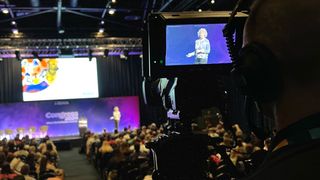Illuminating the Influence of Lighting Methods on the Art of Video Projections Mapping
Illuminating the Influence of Lighting Methods on the Art of Video Projections Mapping
Blog Article
Motion mapping projection is an exciting creative form that merges tech and innovation to transform common surfaces into remarkable visual exhibits. This technique entails projecting graphics and footage onto three-dimensional elements, such as structures, artworks, or stages. One of the key significant elements in creating effective projection in the use of effective illumination techniques. Proper lighting improves the visual components of the display and ensures that the visuals are clear and captivating. This article examines the influence of illumination methods on video mapping and how they can enhance the overall encounter.
Lighting plays a vital role in motion mapping because it sets the mood and tone of the display. Different lighting methods can evoke various emotions and reactions from the audience. For instance, using gentle, cozy illumination can create a inviting environment, while vivid, cold lights may produce a more dynamic or intense impact. By thoughtfully selecting light colors and intensities, artists can manipulate how viewers interpret the displayed visuals, leading to a more immersive encounter. The equilibrium between mapping luminance and surrounding light is crucial, as it can greatly impact the clarity and effect of the images.
In addition to, color and intensity, the direction of illumination also affects the efficacy of mapping. Illumination from about this different directions can generate contrast and accents that introduce depth to the projected images. This technique, known as chiaroscuro, can improve the 3D quality of the objects being mapped. Furthermore, using moving lights can add dynamism to the exhibit, making the encounter more involving for the viewers. When the illumination collides with the mapped visuals, it can produce an effect of movement and transformation, capturing the viewers' attention.
Another important element of illumination in mapping in the use of special effects. Techniques such as gobo lighting, which uses patterns and shapes to project light, can add texture and complexity to the projections. This method enables creators to superimpose visuals and produce aesthetically captivating effects that enhance the mapping. Additionally, incorporating lasers or LED illumination can further enhance the display, offering a unique blend of sight elements that attract the their website viewers in. These unique features, when used carefully, can elevate the projection beyond a simple display to an immersive work of creativity.
In summary, the impact of lighting methods on motion mapping is profound. By comprehending how various illumination elements interact with projected images, artists can produce enthralling encounters that connect with audience. The careful choosing of hue, brightness, angle, and unique features allows for a rich canvas of visual storytelling. As technology continues to evolve, the possibilities for creative showcasing in mapping will only expand, making lighting an ever-important aspect in this progressive creative medium.